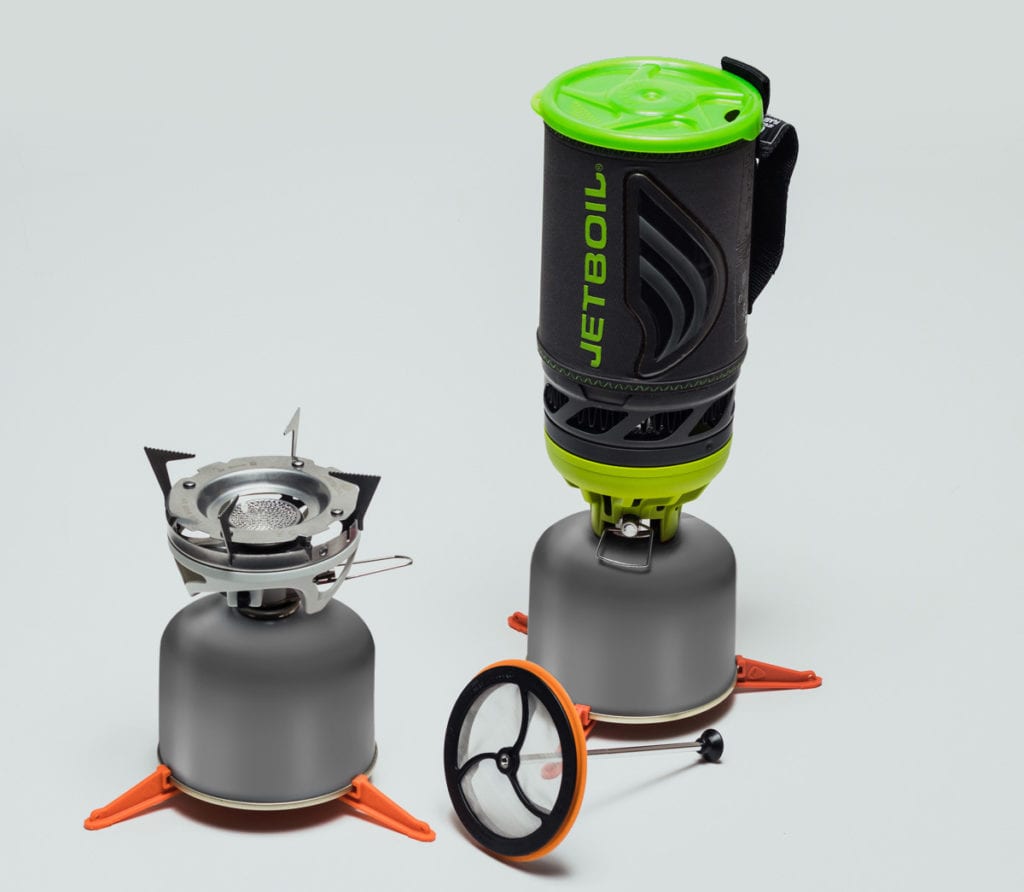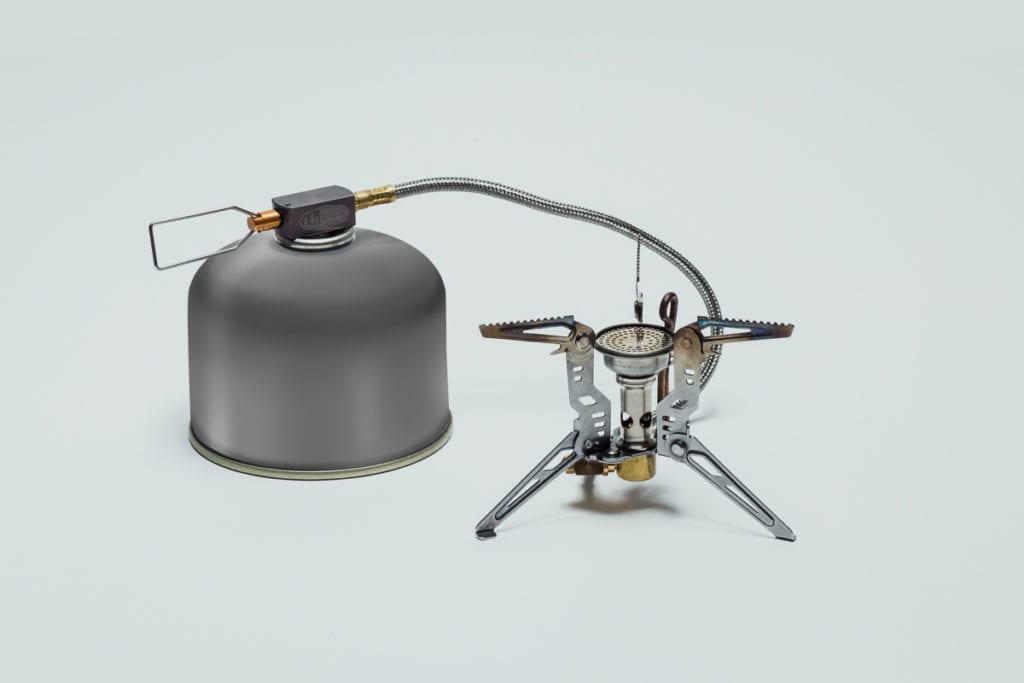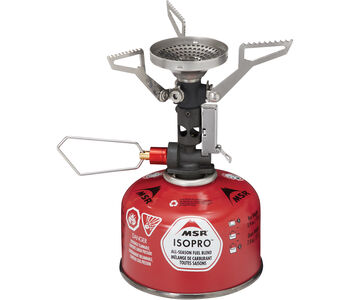Backcountry Stoves: Six of the Newest Stoves Tested and Reviewed
The history of camp cooking and the top stoves for this year
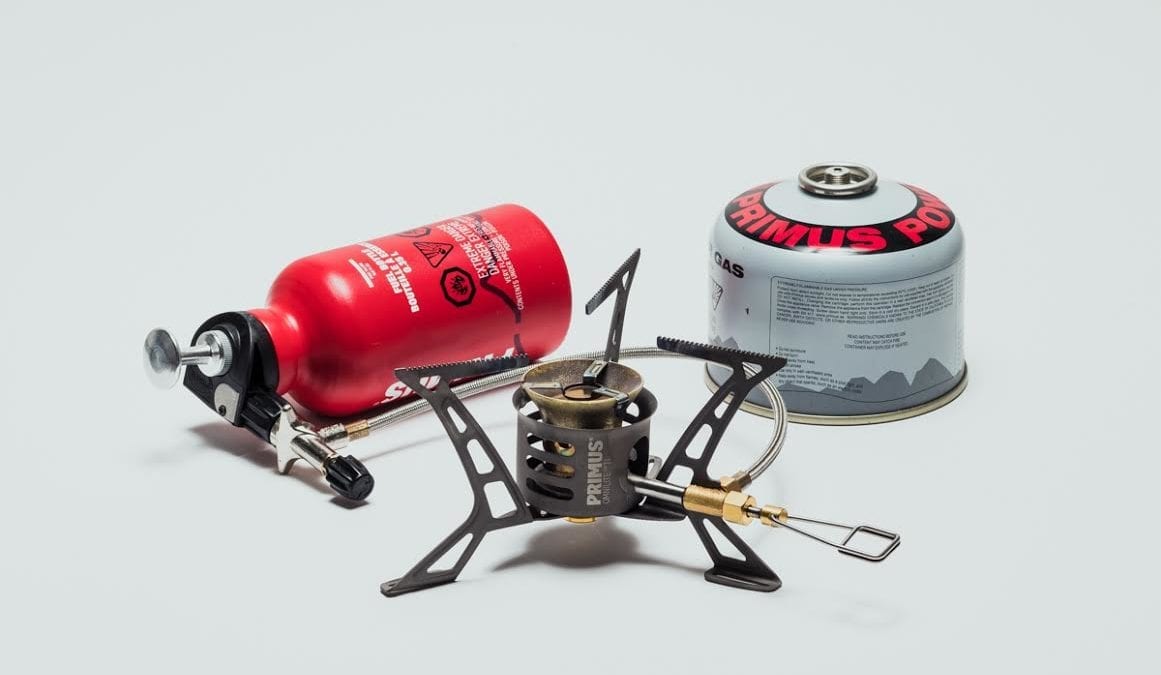
Outdoor cooking began some 200,000 years ago in Africa, and the challenge of providing the flames and the fuel for the job has fascinated human beings ever since. Alexis Soyer built the first single burner outdoor alcohol cooker in the mid-nineteenth century.
Mountaineer Francis Tuckett had a similar stove built with an integral cook set to hang from the inside of a tent around the same time. Carl Richard Nyberg, the father of the blowtorch, started the Primus company in Sweden and sold the first pressurized gas stove, designed by Frans Wilhelm Lindquist, beginning 1892.
Many imitations followed, and as the number of fire scars and backcountry users increased, more and more backpackers embraced the stove with its low environmental footprint. In 1970s, American manufacturer Mountain Safety Research (MSR) came up with an innovative design with the fuel bottle separated by a hose. In the past few decades, stoves fuelled with canisters of liquified petroleum gas (LPG, usually mixtures of propane and isobutane) have become more efficient and now dominate the market because they are convenient and practically maintenance-free.
Almost all of these canisters are exchangeable between stoves because of the universal lindal valve threading. Manufacturers nonetheless tend to argue that their own branded LPG canisters work especially well on their own stoves. All of our tests were made with the same brand of canister.
There are still uses for liquid gas, although the old idea that canisters are incompatible with winter camping is no longer true. Liquid gas is cheap, efficient and little affected by extreme cold. As such, it is ideal for long tasks like snow-melting. Liquid gas stoves also used to be praised for their simmering capabilities while the LPG stoves showed their provenance in the blowtorch industry. Most LPG stoves, however, have made great strides in this department and can now simmer as well as liquid gas models. We have only reviewed one stove that burns liquid fuel in this review.
All boil times are our own, and were taken at sea level and 18 degrees Celsius. All of these stoves are compatible with heat exchanger cooking pots.
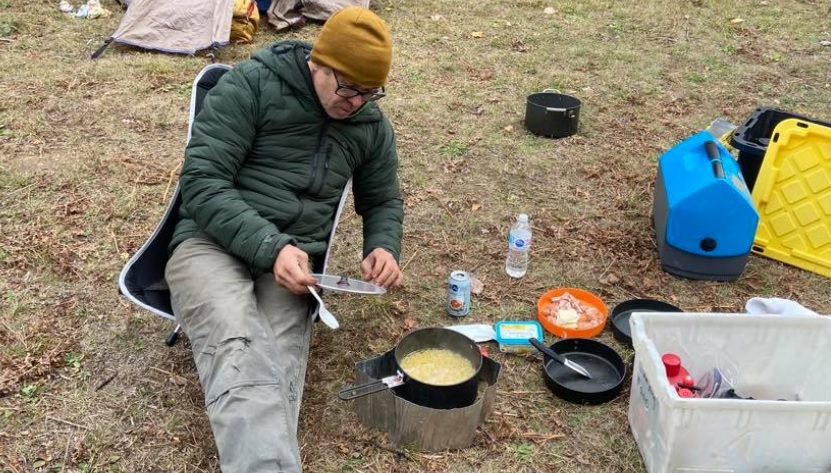
Jet Boil Micromo and Jet Boil Flash Java
Jet Boil Micromo
Weight: 340 g Includes cup, lid and cooking cup
Boil time: 500 ml, two cups: 2 Min 15 sec (Man. Time, using their integrated flux ring, cup/pot and cosy)
Fuel: LPG canister gas
Price: $165 CAD
[buynowbutton link=https://click.linksynergy.com/deeplink?id=W3*Dt/7Qmhc&mid=42557&murl=http%3A%2F%2Fwww.altitude-sports.com%2Fproducts%2Fjetboil-jetboil-micromo-cooking-system-llll-jtb-mcm]
Jet Boil Flash Java
Weight: 371 g (Includes cup, lid and cooking cup)
Boil time: 2 cups in 90 sec (man time)
Fuel: LPG canister gas
Price: $155 CAD
Jetboil is famous for offering integrated cooking cup/stove systems paired with a flux ring and their own, super efficient fuel cartridges and their line-up includes group stoves, camp stoves and variations on the original, sleek, modular unit, like the MiniMo, of which the Micromo is the most recent iteration.
Out of the box, you get a burner with a sparking, integrated lighter, the .8 litre cooking pot /flux ring/cosy, the lid with straining holes a cup that clips on the bottom of the cooking cup and a folding plastic tripod stand to go on the bottom of the fuel canister to stabilize the stove. You also get a ring to attach to the burner with four folding supports if you want to use the stove with your own pots. It worked well and was stable after we figured out how to set it up, which was a little counter-intuitive.
One thing to be clear about with the Jetboil stove is that only their own brand of canisters fit inside the cup for a compact carry. As with any canister stove, performance drops in the cold or at higher altitude when the external ambient pressure drops. Nonetheless, these stoves are popular with high altitude climbers for their convenience. We’ve certainly used it in temperatures down to -15 with no significant problems.
Set up is easy. Remember to extend the wire gas flow handle before screwing the burner to the cartridge. The automatic electric lighter worked every time. Cook time thermochromatic color-change heat indicator.
One of the disadvantages of the system is that it is a little tricky to get the heating cup on and off the burner, and, of course, the bottom of the cup is extremely hot. Nonetheless, the Jetboil delivers a super-fast boil that could provide you with enough hot water to rehydrate a dehydrated meal, make instant soup or a hot beverage in super-fast times.
With the Flash Java, you don’t get the metal ring to adapt the stove to your own pots, but you do get a silicone coffee strainer and a screw-together plunger that firs in the strainer-lid to use the stove as a French press-style coffee maker. Even with this in the cup, it can still fit a small Jetboil canister. If you’re purchasing your stove in the USA, you also get a small container of Green Mountain Coffee. The cooking cup is 200 ml larger than that on the standard Jetboil and the cozy includes a clear plastic logo Jetboil calls a “thermochromatic color-change heat indicator,” that changes colour when the water is hot enough for coffee.
Really, the Jetboil has few disadvantages for light and fast missions involving cooking for a couple of people. The neat integration of cooking system and stove really works on trips of that scale.
Pros: Very fast boil. Compact, complete system
Cons: Price, small cooking pot (but the Micromo can be used with other pots too)
GSI Pinnacle Four Season
Weight: 156 g
Boil time: 1 l. in 3:55
Fuel: LPG canister gas
Price: $112 CAD
[buynowbutton link=https://click.linksynergy.com/deeplink?id=W3*Dt/7Qmhc&mid=42557&murl=http%3A%2F%2Fwww.altitude-sports.com%2Fproducts%2Fgsi-outdoors-pinnacle-4-season-stove-llll-gsi-56003]
Most canister stoves are designed for warmer weather and as such attach directly to the canister. The Pinnacle Four Season is designed for four season use and the canister attaches to the stove with a tube. This allows you to turn the canister upside-down when it’s low, or at higher altitudes, to improve the pressure.
It also allows for a lower and potentially more stable stove, aids in simmering and makes it possible to use a windscreen around the stove (but not the canister). It also makes the stove burn much hotter because the fuel comes up the tube in liquid form and is only vaporized just before it is burned. The vaporizer tube’s principal function is to keep the fuel warm in cold temperatures. A litre of water boiled in about 2:55 with the canister in this orientation. Needless to say, the fuel also burns faster this way.
This stove is hot either way. It boiled a litre of water with the canister upright considerably faster than the manufacturer’s specifications, at 3:55. The simmer worked very well, with great flame control from the handle on the valve, which is hard to achieve with any stove.
The whole stove, including the tube and valve fits into a tiny bag a fraction of the size of a white gas stove, so the stove is a great choice for lightweight cold-weather adventures. Like all canister stoves, however, the gas pressure will start to decrease below a certain temperature, increasing cooking times.
It’s a great, light, compact hot stove but the feet, for a winter stove especially, are very narrow and don’t inspire much confidence in the snow. Likewise, the pot arms although they provide a sufficiently wide platform have little play in them after they are extended, inspiring a little less confidence than I would have liked, especially when cooking on an already unstable snow surface. Finally, it’s hard to adjust the heat with the valve when the canister is upside-down. This could be easily remedied by including a small plastic stand with the stove.
Overall, an incredibly light, powerful, rugged stove with the right features to take on winter camping cooking needs.
Pros: Light, compact simmers well
Cons: Feet could be more stable
Primus Omni Lite T1
Weight: 340 g (includes empty liquid fuel bottle)
Boil Time: 1 l. in 2:50 (white gas), 3:00, (propane/isobutane canister)
Price: $250 CAD
The only stove in this review that also burns liquid gas comes from Primus, a Swedish company with a long heritage in the outdoor industry. When you open the box for this stove you find a titanium-bodied version of their multi-fuel OmniFuel II Stove, with the Silencer burner, The ErgoPump, A multi-tool with a cleaning needle, a foldable windscreen, a heat reflector, a 0.35L fuel bottle, two spare jet nipples stamped with their size.
It’s a bewildering assortment of stuff, but it all adds to the versatility that makes the Omni Lite T1 such a great stove.
The .25mm nipple is optimal for kerosene and diesel, the .32mm is best for gasoline, and the .36mm mounted on the stove already is best for white gas and canister fuel. It all fits in a tough, coated nylon storage bag. The stove sets up fast and burns well with the canister and white gas that we tested it with and requires only that the fuel canister is exchanged for the pump and gas bottle to switch between these fuels. A wire valve control knob on the stove and a second knob on the pump allows further control of the flow of fuel and particularly simmer control.
Primus have always been leaders when it came to robust pump and fuel bottle systems and this stove is no different. The mostly metal parts in the pump and the solid plastic cap are built to last. The pump has an ergonomic shape to make for comfortable pumping. All of the threads are metal and a system that allows the hoses to swivel to accommodate movement without twisting the whole stove is nice in awkward cooking spots.
There is no built-in piezo electric igniter, a device rarely seen on liquid fuel stoves, so you’ll need to pack a lighter. The stove roars when it’s on full blast, and an interesting option for those who prefer silence while they are cooking is to unscrew the regular burner and exchange it with the Silencer burner. The silencer has many small holes in a burner cone to reduce the sound of the flames; we also found it slightly lengthened cooking times.
The folding metal legs snap reassuringly in place over small pegs in the bottom of the stove and provide a broad base for soft surfaces and a wide pot-support surface. Even our biggest pots felt stable on this stove.
This is a great piece of kit for those who can’t predict which fuel will be available at their destination, winter campers and alpinists who need to melt snow and anyone looking for a versatile, rugged, highly featured stove.
Pros: Multi-fuel, excellent flame control, light for liquid fuel stove, extras that come with it
Cons: More stove than needed for some occasional summer trippers
Primus Firestick
Weight: 105 g
Boil Time: 3:20
Fuel: LPG canister gas
Price: $90 CAD
The second-lightest stove we reviewed is by Swedish outdoor company Primus whose products are so ubiquitous in Europe that the company name is sometimes used to refer to any backpacking stove. As backcountry users, we were attracted to the simple, compact and ingenious construction of fire Firestick and eager to try it out.
The burner is enclosed by four metal pot supports that close around it and form a small cylinder by placing a metal cap over the top. When the cap is removed, the pot supports spring into place like flower petals and offer some wind protection for the flame. A small, separate, compact piezo lighter is included. Both the stove and lighter come in an insulated wool bag Primus suggests you use for handling hot pots, but we found it thin and awkward in this role.
The stove started with the lighter with a couple of clicks, but for about the same weight, a regular lighter would be more versatile. The burner control was very good, and simmering was no problem. The stove supports, although stable enough for most pots, were a little narrow to make our large pots feel totally stable, a liability for snow melting and larger groups.
A compact, light stove for small backcountry groups and short, fast trips involving simple cooking tasks.
Pros: Light, compact, simple package for transportation
Cons: Stove platform is a little narrow for heavier pots
MSR Pocket Rocket Deluxe
Weight: 73 g (2.9 oz.)
Boil Time: 1 litre: 3:15
Fuel: LPG canister gas
Price: $ 85 CAD
[buynowbutton link=https://click.linksynergy.com/deeplink?id=W3*Dt/7Qmhc&mid=42557&murl=http%3A%2F%2Fwww.altitude-sports.com%2Fproducts%2Fmsr-pocket-rocket-2-stove-llll-msr-09884]
MSR reinvented the lightweight camp stove in the 1970s with the first remote white gas stoves and still manufactures new iterations of those reliable cookers. It’s no surprise, however, that it has entered the upper end of the lightweight cartridge stove market with innovative ideas. The original MSR Pocket Rocket remains popular and is a very light and reliable stove. The Pocket Rocket Deluxe includes some of the best design features of the Pocket Rocket, like the sturdy, folding pot supports, and at only about 10 more grams, has some extra features.
The piezo electric spark igniter obviates the need for matches or a lighter and worked after just a couple of sparks. MSR says they routed the igniter wire through the burner body to ensure its longevity, and the whole igniter is made of metal and looks pretty durable compared to plastic igniters of old. The burner cup is wider than the Pocket Rocket, which burns fuel and cooks faster. Our model beat the manufacturer’s suggested boil time of 3:30 minutes for a litre of water by 30 seconds.
Cold weather and partially empty canisters have typically plagued canister stove users by decreasing the performance of their stove and increasing boil times. The Pocket Rocket Deluxe’s main innovation is the inclusion of a pressure regulator. The regulator, which MSR first used on its Reactor integrated stove system helps to maintain even pressure in the gas flow, even in cold weather.
Hot, light, compact and versatile, highly recommended for anyone who needs a reliable canister stove for the backcountry.
Pros: Light, integral piezo lighter, good price, regulator helps with gas flow
Cons: Somewhat narrow pot platform
